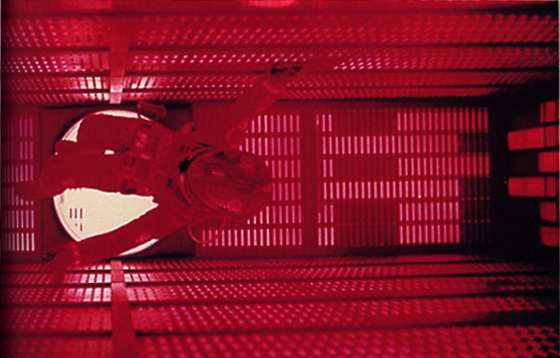| HAL 9000 - A Fictional Computer |
| Written by Lucy Black | |||
Page 1 of 2 HAL is an entirely fictional machine and yet it seems to stir something in the soul of the computer scientist. Why? HAL 9000 is an entirely fictional machine and yet it seems to stir something in the soul of the computer scientist. Why? The machine is the soft spoken anti-hero in Arthur C Clarke’s novel “2001: A Space Odyssey” which was related to the screenplay for the film of the same name, directed by Stanley Kubrick. HAL 9000
born 12 January 1997, Urbana, Illinois Back in 1966 Kubrick wrote to Clarke asking if he had any good ideas for a science fiction movie. Kubrick had just completed the successful movie Dr. Strangelove and wanted something to follow up, something that would comment on man’s wider place in the Universe. Clarke had written a short story called “The Sentinel” in 1948 for a BBC Radio competition. It wasn’t even publish but he still thought it a good idea. It described the discovery of an alien artifact on the moon, a kind of burglar alarm waiting to be set of by mankind’s presence. This, and a couple of other stories, were to form the basis of the film. Conception of an OdysseyClarke wrote the novel first, talking it over with Kubrick all the while and then the pair of them derived the screenplay. In fact the first version of the novel was very much a rough draft of about two thirds of the final book and it stopped before the conclusion. It was enough for Kubrick to get backing from MGM and Cinerama for a film to be called "Journey beyond the stars" or perhaps "How the solar system was won". Fortunately in the end its name settled down to "2001: A Space Odyssey". At the time 2001 seemed far enough away for them not to be made ridiculous by the furious pace of real technological development but not so far ahead that it seemed too distant to the audience. From our perspective 2001 has come and gone and now the gap between the film’s imaginary world and ours seems all too great. The movie was released in the spring of 1968, before the books' publication, and not only was it an immediate success it also created an excitement about the prospect of space travel. It was visually stunning with special effects that are impressive even today. The image of a gently rotating space station wheel to the music of a Strauss waltz is now almost a cliché. The opening scene certainly is - apes discovering that a bone can be a weapon or a tool to the opening fanfare from the tone poem Also sprach Zarathrustra. The movie was very impressionistic, so much so that many viewers must have been left wondering what the story, let alone the message, was. The attraction of the film was its presentation of a confident and well developed technology and HAL was a prime example. Computer as crew memberThe main action of both the film and the book concern a mission to Saturn. HAL 9000 was not only the brain that controlled the ship, but intelligent enough to be considered the sixth crew member. Clarke explains that HAL was intended to stand for Heuristically programmed ALgorithmic computer but urban mythology has it that its name derives from selecting the previous letters in the sequence IBM i.e. I->H, B->A, M->L. If Clarke is telling the truth this is a fine example of finding connections where none exist. If you have seen the film or read the book the rest of the story will be familiar. HAL detects a malfunction in the AE-35, a piece of equipment vital to maintaining contact with the earth. Three of the five astronauts are in suspended animation but one of the two left on duty go out to retrieve the AE-35. When, back on board, they cannot find anything wrong with it they decide that HAL is malfunctioning and should be shut off. Like any reasonable computer HAL decides that he is vital to the success of the mission, something he has been programmed to ensure, and so he defends himself. First he switches off the life support of the three sleeping astronauts. Then he kills the astronaut who is replacing the AE-35. The remaining crew member, Dave Bowman, is enticed to go outside to retrieve the body. HAL refuses to let Bowman back into the ship. Bowman makes the request: “Open the pod bay doors HAL.” HAL replies: “I’m sorry Dave, I’m afraid I can’t do that.” The exchange between Bowman and HAL is icily cold and logical. They both speak slowly and clearly without any trace of emotional content, apart from a bland politeness. Inside HAL's brain
This is the archetypal conflict between computer and man that lives vividly in the mind of anyone who has seen the film. What happens next is inevitable, the human triumphs. Bowman gets back into the ship via an emergency airlock and proceeds to shut HAL down, memory module by memory module. As the computer is gradually reduced to the functioning of a pocket calculator it begins to regress. It reveals its birth date as 12 January 1997 and finally sings a slowing rendition of “Daisy, Daisy, give me your answer do.” <ASIN:B000Q66J1M> <ASIN:B00005ASUM> <ASIN:0451457994> |
|||
| Last Updated ( Monday, 03 October 2022 ) |



